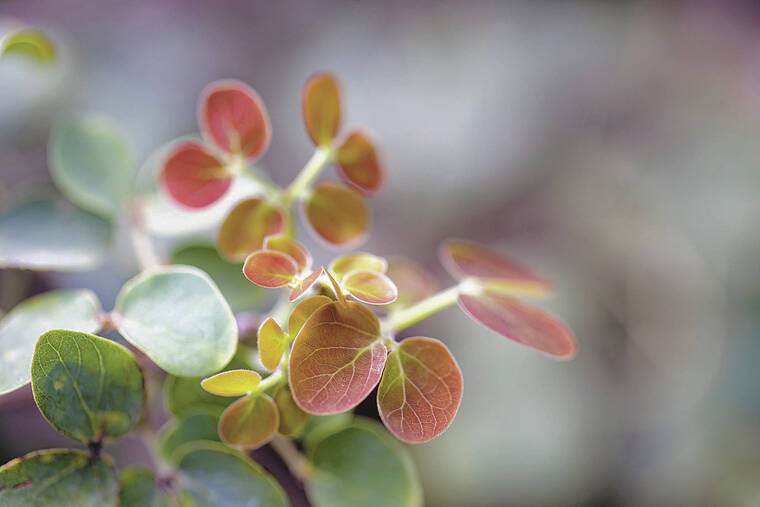Two nearly extinct species endemic to Hawaii — one a bird and the other a plant — made the Endangered Species Coalition’s top 10 list of U.S. species “already imperiled by climate change.”
Named on the “Last Chance” list of dwindling species released Dec. 15 were the kiwikiu, a honeycreeper known to inhabit the eastern slope of Haleakala, and ka palupalu o Kanaloa, a shrubby legume that’s only been found on sea cliffs on Kahoolawe.
Only two kanaloa plants have ever been located in the wild. Although both are now dead, scientists and conservationists were able to germinate two seeds collected from one of the plants.
Last year, after nearly 30 years of unsuccessful attempts to germinate seeds from one of the only adult plants still alive, about two dozen seeds were germinated on Maui. Most of those seedlings from that effort are alive and being cared for by Anna Palomino, a horticulturist at the Olinda Rare Plant Facility.
They’ve been doing well, she told the Honolulu Star- Advertiser, and the adult plant is currently flush with new growth and flowers, which will hopefully produce more seedlings.
“I’m crossing my fingers. Everything’s doing well … ,” Palomino said. “It’s flowered probably one or two times, but not in a very profuse way. We’ve had a small amount of flowers but not like what it’s doing now … . That’s why the excitement.”
The species will need all the help it can get, as it is among the most endangered plant species in Hawaii.
A 2013 assessment of more than 1,000 plant species in Hawaii Opens in a new tab measuring their vulnerability to climate change found that the kanaloa was among the top three most-vulnerable species. The assessment measured species’ abilities to move, adapt or endure as the climate changes.
The kiwikiu, also known as the Maui parrotbill, was thought to be extinct until it was rediscovered in 1950. Its population has been estimated at about 150 and, like many native birds, it is primarily being threatened by invasive mammal predators, avian malaria spread by mosquitoes and habitat loss.
The high elevation of the kiwikiu’s habitat used to be cold enough to stave off the mosquitoes, but warming associated with climate change is allowing mosquitoes broader range.
A 2019 reintroduction plan by the Maui Forest Bird Working Group moved 14 kiwikiu to the southern slope of Haleakala to establish a second population, but a followup report of the plan earlier this year Opens in a new tab said the birds had died of avian malaria or disappeared after an average of just a few weeks.
The report was authored by the Maui Forest Bird Recovery Project, Pacific Bird Conservation, San Diego Zoo and the state Department of Land and Natural Resources, which partnered in the translocation project.
“This was, in many ways, the culmination of over a decade of work by innumerable people and organizations to save the kiwikiu,” the report said. “The manner and scale of the kiwikiu deaths … and the ramifications for future conservation leave us with a sense of loss and grief. However, we as a conservation community are no less determined to save the kiwikiu from extinction.”
The species is currently on an extinction timeline, and a plan to prevent that from happening involves moving some of the birds to zoo facilities on the mainland.
Joining the two Hawaii species on the Endangered Species Coalition list are the western ridged mussel found along the U.S. West Coast, Mexican long-nosed bat, Florida Key deer, whitebark pine, diamondback terrapin, elkhorn coral, monarch butterfly and Sierra Nevada yellow-legged frog.
The report prefaces the list with a reference to a dire report by United Nations scientific agencies on the rapid global climate change occurring and biodiversity loss that was released last summer.

